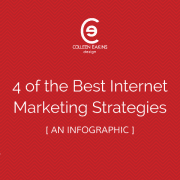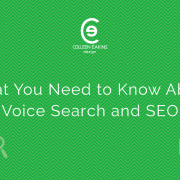Incorporating Social Video Marketing
Currently, in the content marketing landscape, video marketing is the highest valued strategy. The personal touch that a video can offer that other content marketing tactics can’t, is unbeatable. Social video marketing is replacing commercials on TV because more people are spending time on their phone than watching the tube.
Are Videos THAT Successful?
You are probably thinking that social video marketing is just another fancy term for commercial. Yes, but also a big NO. With commercials you get a 30 second blimp in to a product without any real emotional connection. With video marketing pushed out on social, the brand is able to position themselves in a way that allows for full interaction. Think about the videos you have recently watched on any social media platform – you can view, re-watch, like, comment and share all within minutes. This not only can increase your social media awareness, but drive engagement and sales from having one or several small snippets of valuable brand-boosting tools.
Types of Videos
When deciding on what video is best for your company and brand for a specific campaign or goal – you must take in to consideration that not everyone in your audience will respond to one type of video the same way. Being able to have a selection of videos ready will help serve the whole audience.
- Interview (Q&A) – try different formats of this type. Prepared questions with a team member/leader of the brand or taking live questions from the comments. This can also be done with one person who speaks directly to the followers and answers questions as they come in.
- Behind-the-Scenes – this type of video is a great way to show your audience how you operate as a team, company, and the real work that is put in to produce a product or service.
- Product Video – watching someone else who knows the product demonstrate its capabilities is a great way to convert your audience to purchase the item. Keep in mind that an informal video might perform better than a paid ad, as it will seem more sincere.
- Live Video – using a platform that offers live steaming is very beneficial. It can make it seem like your brand is more ‘human’ and willing to showcase that mistakes happen because what you are showing is live and there is no editing. This will create a great connection with the audience. This type of video is great to incorporate other types in a live setting (Q&A, behind-the-scenes, announcements, etc.).
- Audience Generated Content – let your loyal followers share their own content. This will show how willing your company is in engaging with those that enjoy your product of service. Find organic fan posts, reach out to them individually or hold a contest to collect clips.
- Announcements/Breaking News – whether these are live or filmed beforehand, using these types of videos can create a buzz and following for a launch of a new product or service. A lot of users will go to social media to find their news and any breaking stories. And your followers will feel like they received the news first and have the power to share that information, if they please.
- Events – you can use this type of video in a live setting or as an edited reel post event. This can give the audience watching online a chance to see what those attending can’t see with behind-the-scenes footage or speaking one-on-one to special guests.
- How-Tos – everyone has looked up in a search, “How to….” and received many video choices about what they are needing. These will need to tailored to the social media platform that it is being posted (a few minutes vs. an hour), but can be very useful if your product can be difficult to use or your offerings can be combined with many different items.
What Social Media Platforms Do I Use?
This will pertain to the type of video you are producing and targeted audience from the determined campaign or goal. We know YouTube as the ‘king’ of videos, but other platforms are great for video marketing, as well.
YouTube will offer the chance to create longer content, if needed. Although, keep in mind your audience and if their attention span will be able to handle a feature film. YouTube does not have the live feature and may be best suited for interviews, demonstrations, or company/event reels.
For Facebook and Instagram, the time length of your video will need to be shorter. It will also need to be more entertaining, and creative to compete with the other items in your follower’s feed. These two platforms also offer the additional story feature, which you can use for announcements, quick behind-the-scenes exclusive views, how-tos, and live streaming.
Snapchat will offer you the shortest amount of time to show your content. This however, may be where your audience may live if they are in a younger age group. Short, fun videos will keep the attention of your audience while pulling them in to seeing what will be shown next.
Loop in your analytical findings to determine which channel may best serve your goal. Use a variety of video types and channels to help test which avenue resonates with your followers.
Creative Tips
Small team? Don’t have the budget or resources to create high quality videos? There are some great applications that can assist in developing great videos:
- FilmoraGo – is a free mobile video editor, with purchase options built within the program. Features include: trimming video, adding themes or filters, music, and captions.
- Magisto – is a free mobile app that prides itself on turning images and videos into stories within just a few quick clicks with similar features as FilmoraGo. They also offer a business plan that offers a company to reorder movie scenes.
- Adobe Premiere Clip – is a free mobile app, with paid upgrade plans. They offer an automatic edition option that will generate a clip based on the uploaded content with customized options or use their freeform editing option that will allow you to edit as you see fit. You can also share the content to the app’s community.
At Colleen Eakins Design, we can help strategize what design components will be needed in your video along with a storyboard to guide you in producing the best content for your campaign. Contact us today!

I received my Bachelors in Marketing and Certification in the Pastry Arts. I have managed a wide array of printed and digital marketing needs.


 ©2018, Colleen Eakins Design
©2018, Colleen Eakins Design ©2018, Colleen Eakins Design
©2018, Colleen Eakins Design ©2018, Colleen Eakins Design
©2018, Colleen Eakins Design ©2018, Colleen Eakins Design
©2018, Colleen Eakins Design
 ©2018, Colleen Eakins Design
©2018, Colleen Eakins Design